Physical Address
304 North Cardinal St.
Dorchester Center, MA 02124
Primary neoplasms of the skull are rare. The most common lesions in children with a solitary nontraumatic lump on the head are dermoid tumors (61%), cephalhematomas (9%), Langerhans cell histiocytosis (LCH) (7%), and occult meningoceles and encephaloceles (4%).
Osteochondromas may arise from the cartilaginous bones of the skull base. Osteoblastomas have been reported in the calvaria of infants, and aneurysmal bone cysts have been noted in the skull base and the calvaria ( Fig. 21.1 ). Osteomas are small and usually limited to the outer table, although osteoid osteomas may occur in the diploë. Osteoid osteomas may present as a button sequestrum. Malignant bone tumors are unusual, but osteogenic sarcoma and Ewing sarcoma have been reported ( e-Fig. 21.2 ).
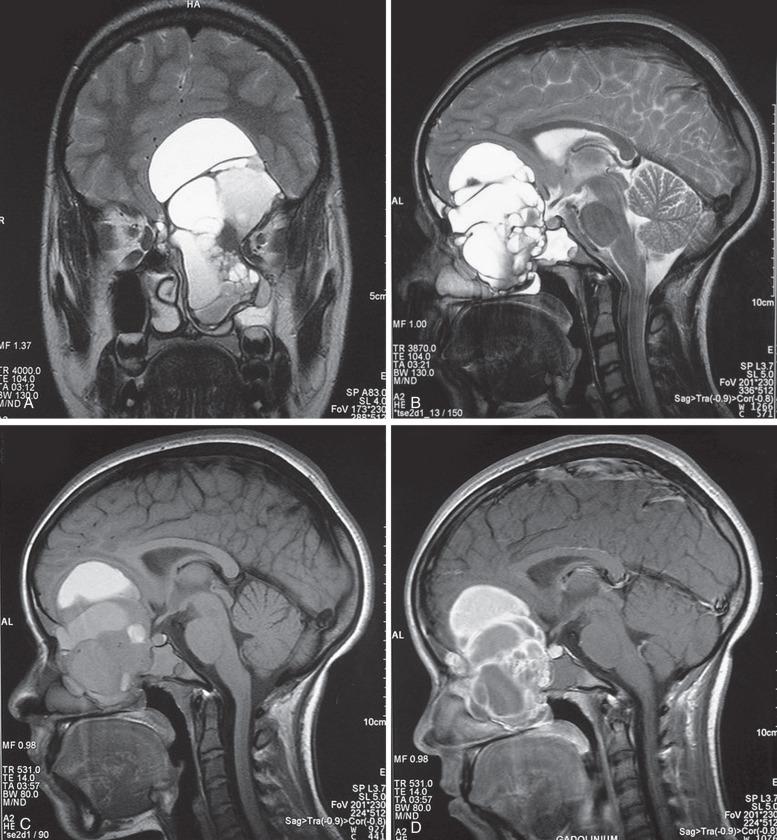
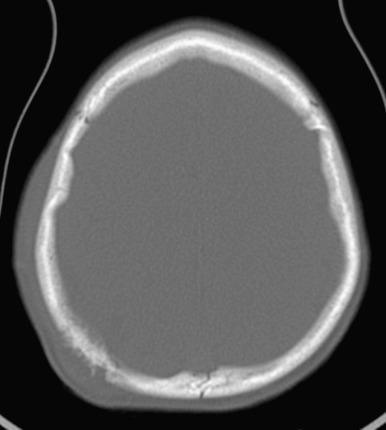
Angiomas and neurofibromas of the scalp may affect the underlying skull and cause deformities, bony defects, and regional hyperostoses. Plain radiographs of neurofibromatosis (NF) most commonly show lytic defects in the lambdoid suture, but also include absence of the orbital roof and floor, partial absence of the greater sphenoid wing, anteroposterior enlargement of the middle cranial fossa with possible bony erosive changes, enlarged cranial nerve foramina, and J -shaped sella ( Fig. 21.3 ).
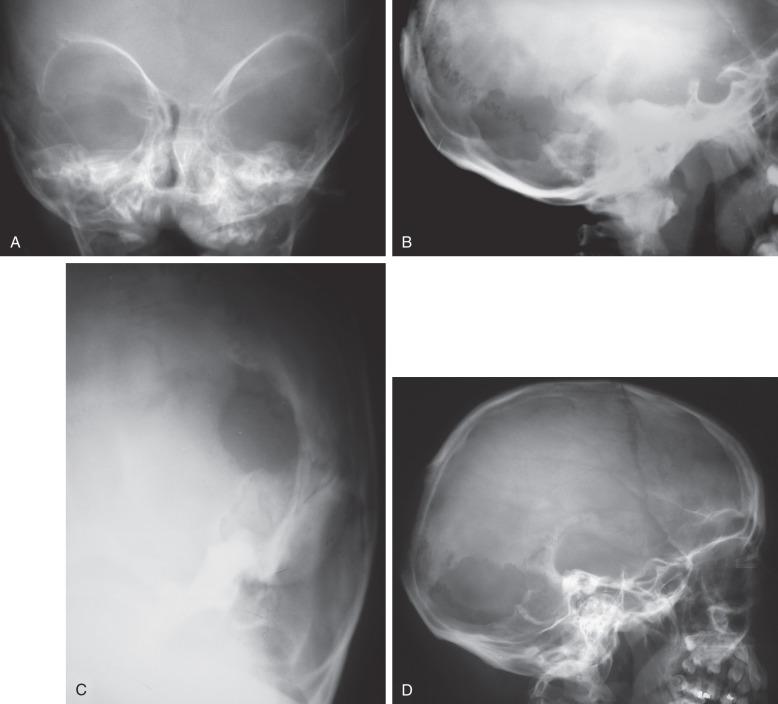
Venolymphatic malformations (formerly known as cavernous hemangiomas) of the skull are characterized by rounded areas of diminished density in which there may be a honeycomb or radial pattern of spiculation. These malformations ( e-Fig. 21.4 ) thicken the outer table externally and are radially striated. They do not displace the inner table.
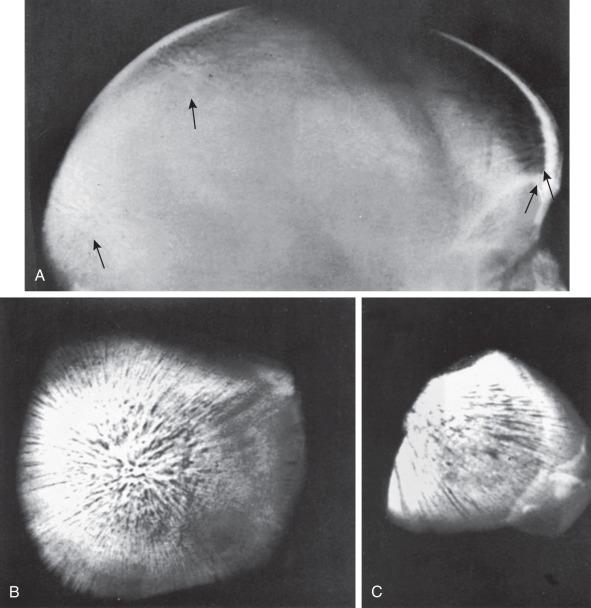
Epidermoids are ectodermal rests or inclusions that may be in the scalp, the diploic spaces, or between the internal surface of the inner table and the dura. Epidermoids are typically benign and grow slowly. When epidermoids involve bone, they produce lucent, sharply demarcated lesions with smooth, sometimes scalloped, margins ( Fig. 21.5 ). These lesions are treated with surgical excision.
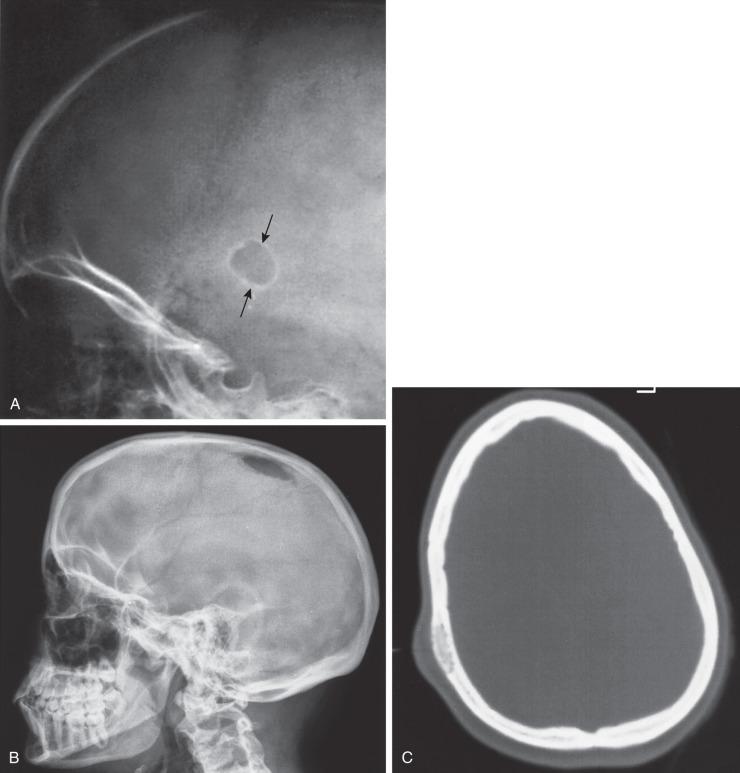
Meningiomas are rare in children. Radiographic changes include reactive hyperostosis, an increase in the caliber and number of grooves for regional blood vessels, and calcifications in the meningioma itself. Occasionally, there are radiolucent patches due to overlying bone loss. Rarely, interosseous meningiomas occur ( e-Fig. 21.6 ). Multiple meningiomas suggest NF. Calvarial lesions, like the lesions in NF, can occur in congenital fibromatosis.

Chordomas are malignant neoplasms that are more aggressive in children than in adults. Children and adolescents account for less than 5% of all chordomas, with the majority being in the clivus. They may present with headaches (due to increased intracranial pressure), cranial nerve palsies, and long tract signs. Children less than 5 years may present with torticollis. On magnetic resonance imaging (MRI) chordomas are lobulated masses with septations. They are predominantly T1 isointense/hypointense and T2 hyperintense with marked heterogeneous enhancement ( Fig. 21.7 ).

Melanotic neuroectodermal tumor of infancy (melanotic progonoma, retinal anlage) is rare. More than 90% of cases involve the head and neck; 70% in the maxilla, and about 11% in the calvarium, arising in the sutures with roughly half at the anterior fontanelle. In the calvarium, the tumor most often presents during the first year of life as a movable scalp nodule that subsequently invades the bone, becomes fixed to it (often adhering to the dura), and grows very rapidly. Bone destruction creates a sunburst appearance tangential to the mass ( e-Fig. 21.8 ). Occasionally, the mass presents as a soft tissue density. MRI signal is variable on T1- and T2-weighted images, but consistently shows marked enhancement. Malignancy has not been reported for tumors in the calvarium, whereas malignancy has been noted in extracalvarial tumors.

Secondary tumors of the calvarium are more common than primary tumors and include leukemia, neuroblastoma, small round cell tumors, and LCH ( Figs. 21.9 through 21.11 and e-Fig. 21.12 ).
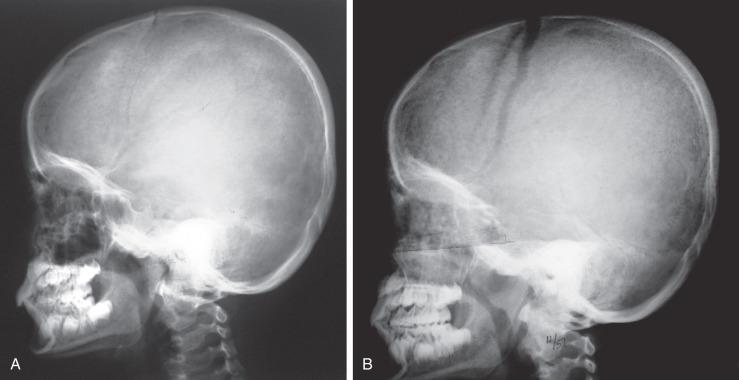
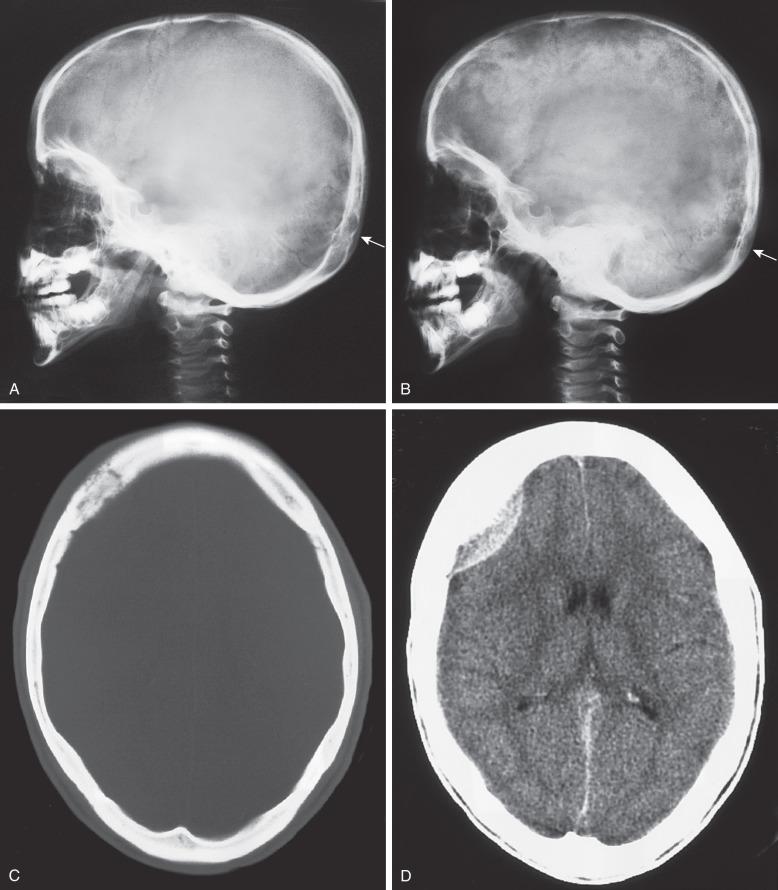

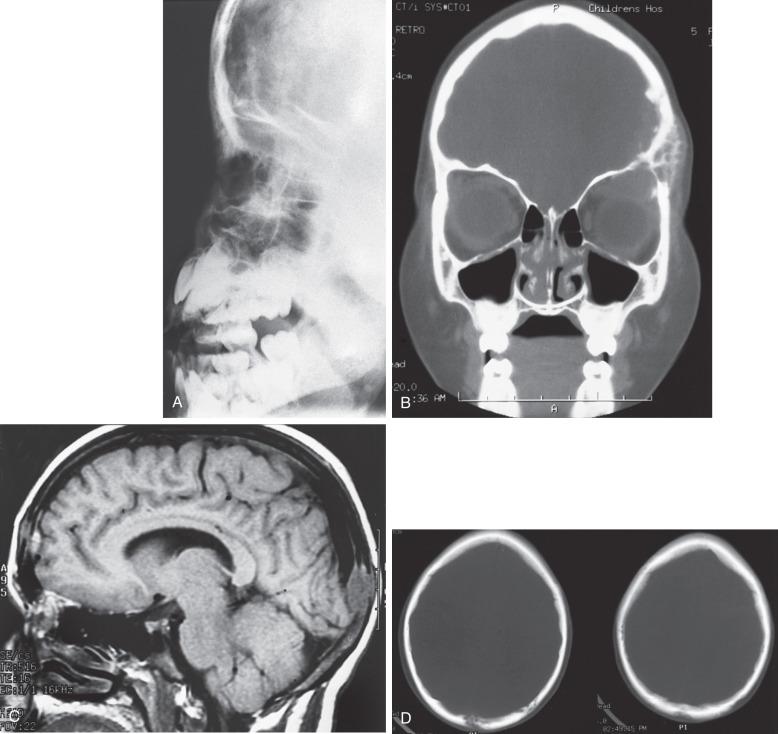
LCH is addressed in more detail in Chapter 139 ; only the calvarial manifestations are presented here. Lesions in the skull are common, with an incidence of 28% to 54%. The calvarium is affected more frequently than the skull base with the parietal bone being the most common. Multiple lesions are most frequently in children younger than 5 years. A solitary calvarial lesion in a child older than 5 years is likely to be LCH ( Figs. 21.13 and 21.14 ). Sphenoid bone involvement may be associated with diabetes insipidus. Exophthalmos may occur when the bones of the orbit are involved.

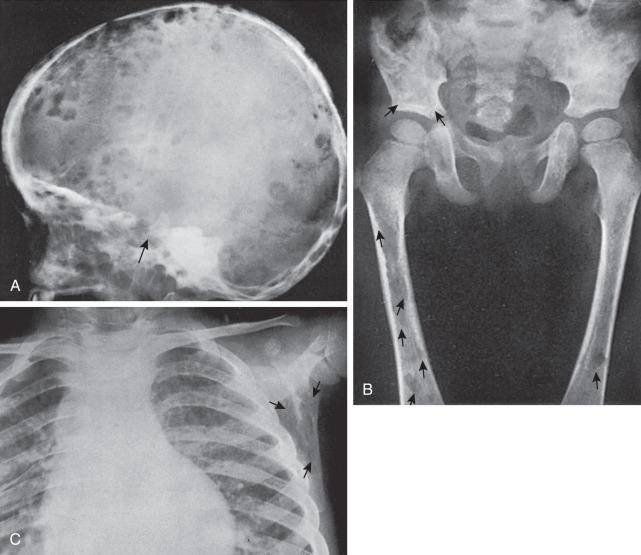
Mandibular LCH is more common than maxillary involvement and begins characteristically in the molar areas of the alveolar processes, where osseous destruction results in a characteristic finding of “floating teeth.” The teeth are frequently loose, and spontaneous shedding of teeth is common.
The radiographic hallmark of skull LCH is a “punched-out” radiolucent defect with little or no adjacent reaction. LCH lesions involve the full thickness of the calvarium and have a classic beveled edge. Lesions often have a soft tissue mass and may extend across sutures. LCH is the most common cause of a button sequestrum (which is also seen with infection). During healing, the margins of the lesions lose their sharpness, and the lesion gradually disappears.
Become a Clinical Tree membership for Full access and enjoy Unlimited articles
If you are a member. Log in here